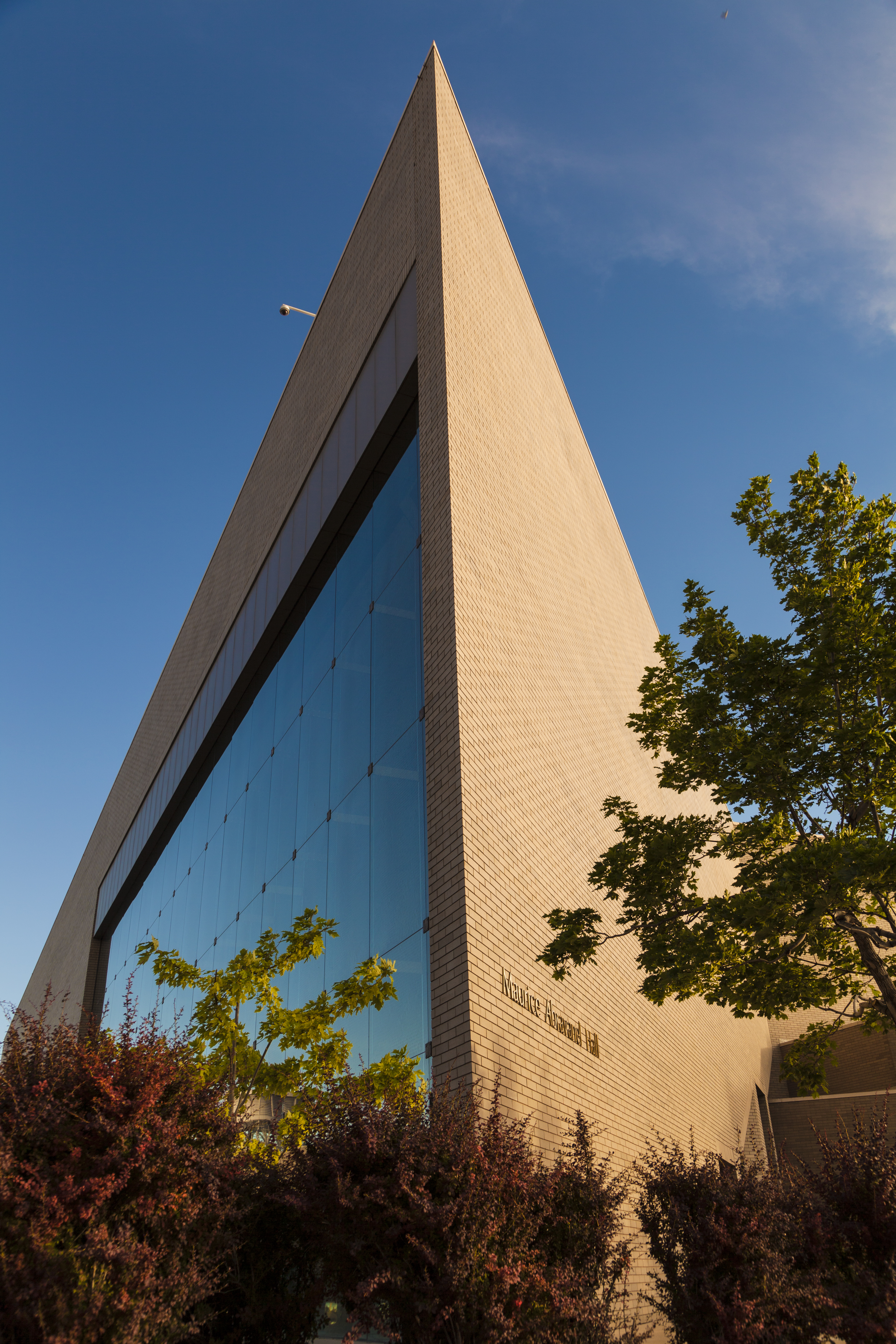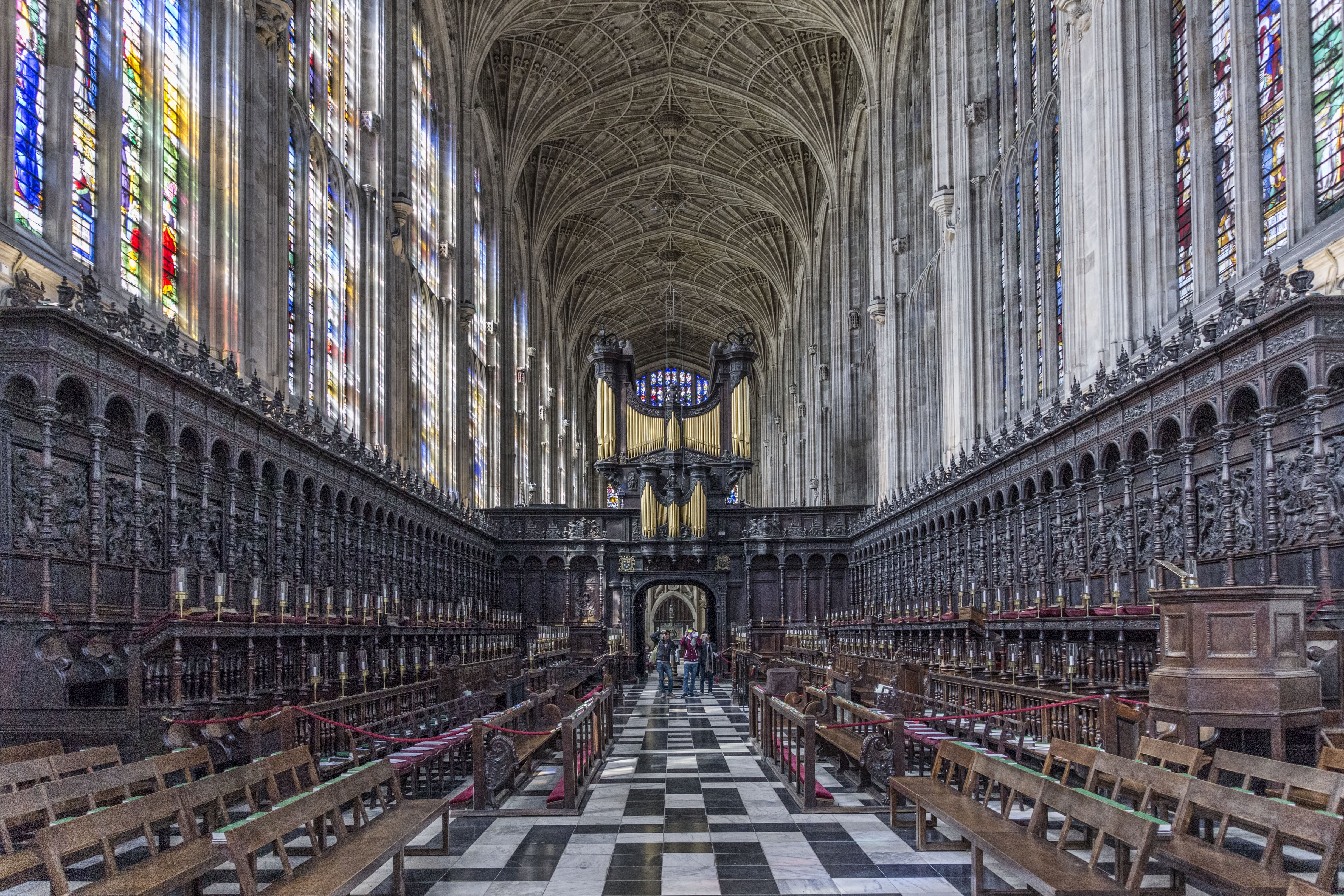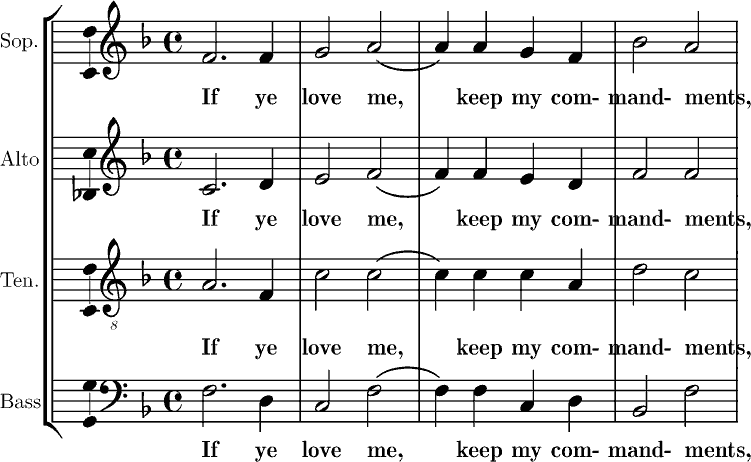|
Cantique De Jean Racine (Fauré)
''Cantique de Jean Racine'' (Chant by Jean Racine), Op. 11, is a composition for mixed choir and piano or organ by Gabriel Fauré. The text, "Verbe égal au Très-Haut" ("Word, one with the Highest"), is a French paraphrase by Jean Racine of a Latin hymn from the breviary for matins, ''Consors paterni luminis''. The nineteen-year-old composer set the text in 1864–65 for a composition competition at the École Niedermeyer de Paris, and it won him the first prize. The work was first performed the following year on 4 August 1866 in a version with accompaniment of strings and organ. The style shows similarities with his later work, Requiem. Today, the two works are often performed together. History Fauré entered the school of church music École Niedermeyer de Paris in 1854, when he was nine years old. There he received training in piano, theory, composition, and classical languages. Weekly choir singing was part of the curriculum for all students. Fauré's teacher in advance ... [...More Info...] [...Related Items...] OR: [Wikipedia] [Google] [Baidu] |
Gabriel Fauré
Gabriel Urbain Fauré (; 12 May 1845 – 4 November 1924) was a French composer, organist, pianist and teacher. He was one of the foremost French composers of his generation, and his musical style influenced many 20th-century composers. Among his best-known works are his ''Pavane (Fauré), Pavane'', Requiem (Fauré), Requiem, ''Sicilienne (Fauré), Sicilienne'', Fauré Nocturnes, nocturnes for piano and the songs Trois mélodies, Op. 7 (Fauré), "Après un rêve" and Clair de lune (Fauré), "Clair de lune". Although his best-known and most accessible compositions are generally his earlier ones, Fauré composed many of his most highly regarded works in his later years, in a more harmony, harmonically and melody, melodically complex style. Fauré was born into a cultured but not especially musical family. His talent became clear when he was a young boy. At the age of nine, he was sent to the École Niedermeyer de Paris, Ecole Niedermeyer music college in Paris, where he w ... [...More Info...] [...Related Items...] OR: [Wikipedia] [Google] [Baidu] |
D-flat Major
D-flat major (or the key of D-flat) is a major scale based on D, consisting of the pitches D, E, F, G, A, B and C. Its key signature has five flats. It is enharmonically equivalent to C-sharp major. The D-flat major scale is: : Its relative minor is B-flat minor. Its parallel minor, D-flat minor, is usually replaced by C-sharp minor, since D-flat minor features a B ( B-double-flat) in its key signature making it impractical to use. C-sharp major, the enharmonic equivalent to D-flat major, has a similar problem as it contains seven sharps. Therefore, D-flat major is often used as the parallel major for C-sharp minor. (The same enharmonic situation occurs with the keys of A-flat major and G-sharp minor). For example, in his Prelude No. 15 in D-flat major ("Raindrop"), Frédéric Chopin switches from D-flat major to C-sharp minor for the middle section in the parallel minor, while in his ''Fantaisie-Impromptu'' and Scherzo No. 3, primarily in C-sharp minor, he switche ... [...More Info...] [...Related Items...] OR: [Wikipedia] [Google] [Baidu] |
Utah Symphony
The Utah Symphony is an American orchestra based in Salt Lake City, Utah. The orchestra's principal venue is Abravanel Hall. In addition to its Salt Lake City subscription concerts, the orchestra travels around the Intermountain West serving communities throughout Utah. The orchestra accompanies the Utah Opera in four productions per year at Salt Lake's Capitol Theatre. In addition, the Utah Symphony and Utah Opera have a summer residency at the Deer Valley Music Festival, located in Park City, Utah. The orchestra receives funding from the Utah State Legislature for educational concerts. The Symphony has a division in Utah Valley that is based out of the Noorda Center for the Performing Arts at Utah Valley University in Orem, Utah. History The first attempt to create a symphony orchestra in the Utah area occurred in 1892, four years before Utah achieved statehood. The Salt Lake Symphony (not to be confused with the modern Salt Lake Symphony) was created and presented just one ... [...More Info...] [...Related Items...] OR: [Wikipedia] [Google] [Baidu] |
Stephen Cleobury
Sir Stephen John Cleobury ( ; 31 December 1948 – 22 November 2019)Sir Stephen Cleobury: Former King's College choir conductor dies aged 70 23 November 2019 was an English and . He worked with the |
Orchestra Of The Age Of Enlightenment
The Orchestra of the Age of Enlightenment (OAE) is a British period instrument orchestra. The OAE is a resident orchestra of the Southbank Centre, London, associate orchestra at Glyndebourne Festival Opera Artistic Associate at Kings Place, and has its headquarters at Acland Burghley School. The leadership is rotated between four musicians: Matthew Truscott, Kati Debretzeni, Huw Daniel and Margaret Faultless. A group of period instrumentalist players formed the OAE as a self-governing ensemble in 1986, and took its name from the historical period in the late 18th century where the core of its repertoire is based. The OAE does not have a principal conductor, but chooses conductors individually. Having no permanent music director gives the orchestra flexibility to work with some of the world’s greatest conductors and soloists across a wide range of music. The current Principal Artists are Sir Simon Rattle, Vladimir Jurowski, Iván Fischer, John Butt, Sir Mark Elder and András ... [...More Info...] [...Related Items...] OR: [Wikipedia] [Google] [Baidu] |
Choir Of King's College, Cambridge
The Choir of King's College, Cambridge is an English Anglican choir. It is considered one of today's most accomplished and renowned representatives of the great English choral tradition. It was created by King Henry VI, who founded King's College, Cambridge, in 1441, to provide daily singing in his Chapel, which remains the main task of the choir to this day. Today the choir is directed by Daniel Hyde and derives much of its fame from the Festival of Nine Lessons and Carols, broadcast worldwide to millions on Christmas Eve every year, and the TV service Carols from King's which accompanies it. The choir commissions a carol from a contemporary composer for each year's festival. History Early history The original statutes specified that the choir should consist of ten chaplains, six clerks (lay singers) and sixteen choristers who were to be "poor and needy boys, of sound condition and honest conversation ... knowing competently how to read and sing". Perhaps recognising the wor ... [...More Info...] [...Related Items...] OR: [Wikipedia] [Google] [Baidu] |
Orchestre De Paris
The Orchestre de Paris () is a French orchestra based in Paris. The orchestra currently performs most of its concerts at the Philharmonie de Paris. History In 1967, following the dissolution of the Orchestre de la Société des Concerts du Conservatoire, the French Minister of Culture, André Malraux, and his director of music, Marcel Landowski, engaged conductor Charles Munch (conductor), Charles Munch to create a new orchestra in Paris. Soon after its creation, Munch died in 1968, and Herbert von Karajan was hired as an interim music advisor from 1969 to 1971. Successive music directors include Sir Georg Solti, Daniel Barenboim, and Semyon Bychkov (conductor), Semyon Bychkov. Christoph von Dohnányi served as artistic advisor from 1998 to 2000. During his tenure, Barenboim saw a need for a permanent chorus for the orchestra, and engaged the English chorus master Arthur Oldham to create the ''Chœur de l'Orchestre de Paris'' in 1976. Oldham remained with the Chorus till his ... [...More Info...] [...Related Items...] OR: [Wikipedia] [Google] [Baidu] |
Paavo Järvi
Paavo Järvi (; born 30 December 1962) is an Estonian-American conductor. Early life Järvi was born in Tallinn, Estonia, to Liilia Järvi and the Estonian conductor Neeme Järvi. His siblings, Kristjan Järvi and Maarika Järvi, are also musicians. After leaving Estonia, the family settled in the USA, Järvi studied privately with Leonid Grin in Philadelphia, at the Curtis Institute of Music with Max Rudolf and Otto-Werner Mueller, and at the Los Angeles Philharmonic Institute with Leonard Bernstein. Career From 1994 to 1997, Järvi was principal conductor of the Malmö Symphony Orchestra. From 1995 to 1998, he shared the title of principal conductor of the Royal Stockholm Philharmonic Orchestra with Sir Andrew Davis. Järvi was music director of the Cincinnati Symphony Orchestra from 2001 to 2011. The orchestra made a number of recordings for the Telarc label during Järvi's tenure. In May 2011, he was named the orchestra's Music Director Laureate. Since 2004, he h ... [...More Info...] [...Related Items...] OR: [Wikipedia] [Google] [Baidu] |
Charles Gounod
Charles-François Gounod (; ; 17 June 181818 October 1893), usually known as Charles Gounod, was a French composer. He wrote twelve operas, of which the most popular has always been ''Faust (opera), Faust'' (1859); his ''Roméo et Juliette'' (1867) also remains in the international repertory. He composed a large amount of church music, many songs, and popular short pieces including his Ave Maria (Bach/Gounod), Ave Maria (an elaboration of a Johann Sebastian Bach, Bach piece), and ''Funeral March of a Marionette''. Born in Paris into an artistic and musical family Gounod was a student at the Conservatoire de Paris and won France's most prestigious musical prize, the Prix de Rome. His studies took him to Italy, Austria and then Prussia, where he met Felix Mendelssohn, whose advocacy of the music of Bach was an early influence on him. He was deeply religious, and after his return to Paris, he briefly considered becoming a priest. He composed prolifically, writing church music, songs ... [...More Info...] [...Related Items...] OR: [Wikipedia] [Google] [Baidu] |
Felix Mendelssohn
Jakob Ludwig Felix Mendelssohn Bartholdy (3 February 18094 November 1847), born and widely known as Felix Mendelssohn, was a German composer, pianist, organist and conductor of the early Romantic period. Mendelssohn's compositions include symphonies, concertos, piano music, organ music and chamber music. His best-known works include the overture and incidental music for '' A Midsummer Night's Dream'' (which includes his "Wedding March"), the '' Italian Symphony'', the '' Scottish Symphony'', the oratorio ''St. Paul'', the oratorio ''Elijah'', the overture ''The Hebrides'', the mature Violin Concerto and the String Octet. The melody for the Christmas carol "Hark! The Herald Angels Sing" is also his. Mendelssohn's ''Songs Without Words'' are his most famous solo piano compositions. Mendelssohn's grandfather was the renowned Jewish philosopher Moses Mendelssohn, but Felix was initially raised without religion. He was baptised at the age of seven, becoming a Reformed Christi ... [...More Info...] [...Related Items...] OR: [Wikipedia] [Google] [Baidu] |
Reprise
In music, a reprise ( , ; from the verb 'to resume') is the repetition or reiteration of the opening material later in a composition as occurs in the recapitulation of sonata form, though—originally in the 18th century—was simply any repeated section, such as is indicated by beginning and ending repeat signs. A partial or abbreviated reprise is known as a petite reprise ( , ). In Baroque music this usually occurs at the very end of a piece, repeating the final phrase with added ornamentation. Song reprises Reprise can refer to a version of a song which is similar to, yet different from, the song on which it is based. One example could be "Time", the fourth song from Pink Floyd's 1973 album ''The Dark Side of the Moon'', which contains a reprise of " Breathe", the second song of the same album. Another example could be "Solo", the fifth song from Frank Ocean's 2017 album ''Blonde'', and then "Solo (Reprise)", the tenth song of the same album. Music theater In musical thea ... [...More Info...] [...Related Items...] OR: [Wikipedia] [Google] [Baidu] |
Homophony
In music, homophony (;, Greek: ὁμόφωνος, ''homóphōnos'', from ὁμός, ''homós'', "same" and φωνή, ''phōnē'', "sound, tone") is a texture in which a primary part is supported by one or more additional strands that flesh out the harmony. One melody predominates while the other parts play either single notes or an elaborate accompaniment. This differentiation of roles contrasts with equal-voice polyphony (in which similar lines move with rhythmic and melodic independence to form an even texture) and monophony (in which all parts move in unison or octaves). Historically, homophony and its differentiated roles for parts emerged in tandem with tonality, which gave distinct harmonic functions to the soprano, bass and inner voices. A homophonic texture may be homorhythmic, which means that all parts have the same rhythm. Chorale texture is another variant of homophony. The most common type of homophony is melody-dominated homophony, in which one voice, often the ... [...More Info...] [...Related Items...] OR: [Wikipedia] [Google] [Baidu] |






